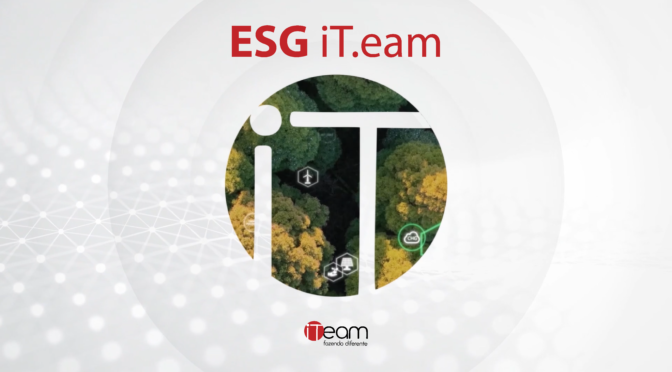Information security (IS) is an increasingly important issue in today's digital world, and cyber incidents can have a devastating impact on companies and organizations of all sizes.
That's why the Incident Response approach has become fundamental to dealing with these situations.
When a security incident occurs, time is of the essence. And it passes quickly. It is therefore necessary to have a team that is highly trained and equipped to deal with the situation.
In this era in which cyber security is fundamental to the success of companies, Incident Response has become an essential tool for guaranteeing business continuity and protecting digital assets.
Find out more.
What is Incident Response?
Incident Response (IR) is a structured approach to managing and responding to information security events, such as cyber-attacks, system failures, human errors, among others.
The aim of Incident Response is to identify, investigate and respond to security incidents quickly and efficiently, minimizing the impact of the event and reducing the recovery time of the affected systems.
The response process involves a series of activities, such as detection, analysis, containment, mitigation, investigation and documentation of the incident. The ultimate goal is to restore normal operation to the affected systems and implement preventative measures to avoid similar events occurring again in the future.
IR teams are made up of specialized IS professionals who have knowledge and skills in areas such as digital forensics, malware analysis, crisis management, communication and reporting.
These teams generally follow a set of well-defined guidelines and procedures to ensure an effective and consistent response to security incidents.
What are the 6 phases of Incident Response?
Next, we'll take a closer look at the phases of IR.
1. Preparing systems
The first phase of Incident Response is system preparation, which involves creating and implementing preventive and security measures to minimize the risks of incidents.
This includes the proper configuration of systems, the implementation of firewalls, antivirus, security policies and regular backups, among others. It's important to remember that preparation is key to minimizing the effects of possible incidents, with due predictability.
In other words, it's a preventative measure.
2. Identifying incidents
The second phase is incident identification, which is the process of recognizing the occurrence of a security incident. This phase can involve automatic detection using IS tools or identification through user reports or other means.
It is important that the IR team is notified immediately after the incident is identified.
3. Virus contamination analysis
Once an incident has been identified, the third phase is virus contamination analysis, which requires investigating and confirming the nature of the event.
In other words: it is an analysis of the degree of impact of the virus spreading through systems and infrastructure.
This includes analyzing affected files and systems, determining the type of malware or cyber attack, as well as identifying the origins and causes of the incident. It is important that the analysis is detailed to ensure an adequate response.
4. Eradicating attacks
The fourth phase is attack eradication, which is the process of removing the malware or cyber attack vectors from the affected systems.
This stage includes identifying and removing infected files, shutting down compromised systems and other measures to stop the attack.
It is important to remember that eradication does not guarantee the total security of systems, and additional measures must be taken to prevent further attacks.
5. Incident recovery
The fifth phase is incident recovery, which is the process of restoring the affected systems to their normal operating state. Here, we're talking about reinstalling affected systems and files, setting up additional security systems and other measures to ensure the protection and integrity of the systems.
It is essential that the IR team works closely with the IT team to ensure an effective recovery.
6. Lessons learned
The sixth and final phase is the evaluation and documentation of the incident, which involves reviewing the incident and documenting the lessons learned.
It includes identifying weak points in the systems, analyzing the measures taken and the results obtained, and documenting them for future use. It is worth noting that this phase must be completed to ensure continuous improvement in security and the prevention of future incidents.
What is the importance of creating an information security policy?
The creation of an information security policy is essential for companies of all sizes and sectors, as it guarantees the protection of confidential data and critical organizational information.
It is therefore an extremely important complement to an incident response solution, since it makes it possible to structure the organization and practices to prevent these problems from occurring.
The IS policy is a set of guidelines, standards and procedures that establish the security measures needed to prevent security incidents, protect the organization's assets and guarantee the privacy and integrity of information.
A well-drafted policy can help a company comply with legal and regulatory requirements, such as the General Data Protection Law (LGPD), the Law on the Protection of Sensitive Information (Law 12.527/11) and other security laws and regulations.
In addition, a protection policy is effective in combating security threats such as intrusions, cyber attacks, information theft, etc.
By implementing a protection policy, the company also contributes to improving the IS culture, making employees aware of potential crimes and the importance of protecting confidential information.
This action is carried out through training, awareness campaigns and other initiatives.
In short, creating an IS policy is a fundamental step towards guaranteeing the protection of the organization's confidential and critical information, minimizing security risks, complying with legal and regulatory obligations and improving the organization's culture of protection.
In an increasingly connected world, information security is a critical issue for companies and individuals. Security incidents can occur at any time, causing significant impacts on business and the reputation of organizations.
That's why it's essential to have a well-structured Incident Response plan that allows problems to be identified quickly and an agile response to minimize the damage.
In addition, the implementation of security measures, such as the information security policy, is fundamental to preventing incidents and protecting the organization's critical and confidential information.
Did you like our content? Leave a comment with your opinion!
Leave a comment
See also:
iT.eam Copyright 2024 - Todos os direitos reservados.
Acesse nossa Política de Segurança da Informação. | Acesse nossa Política de Privacidade da Informação. | Acesse nossa Política Antissuborno e Anticorrupção. | Canal de Ética







